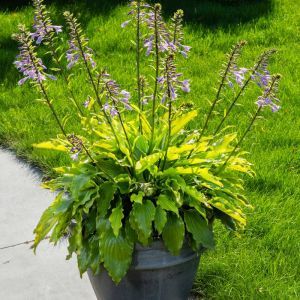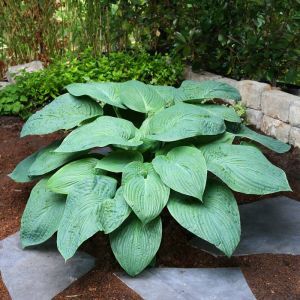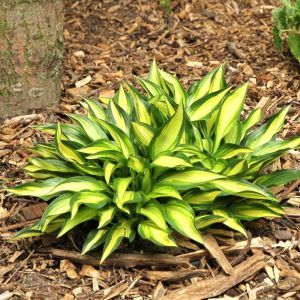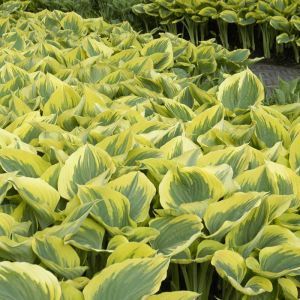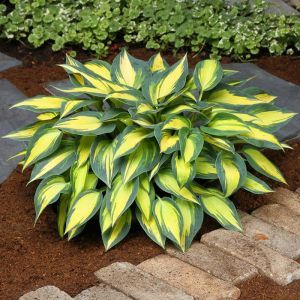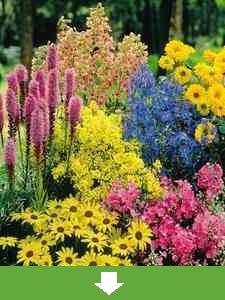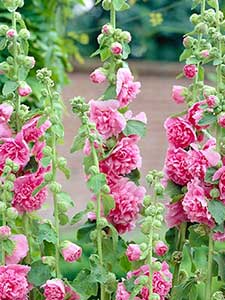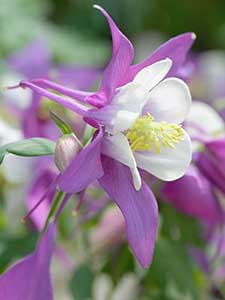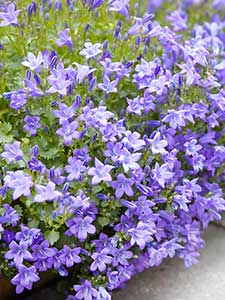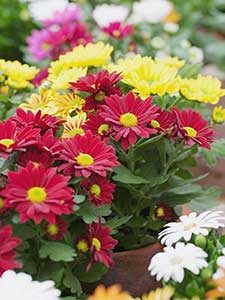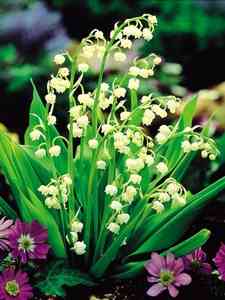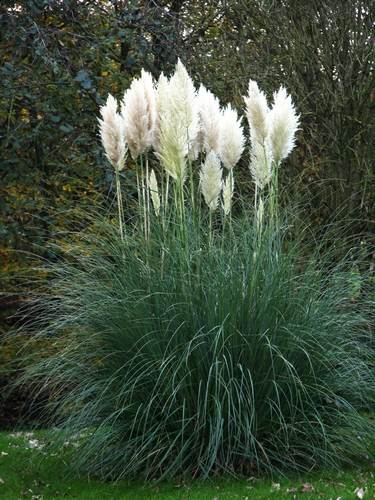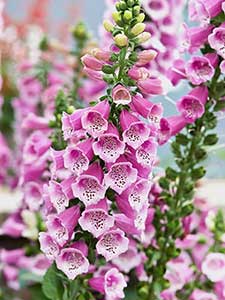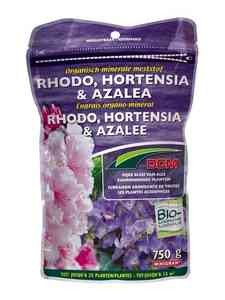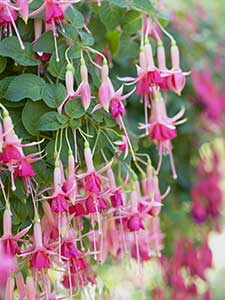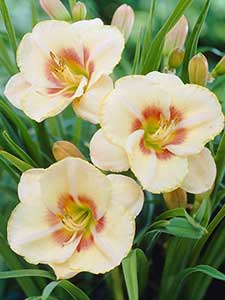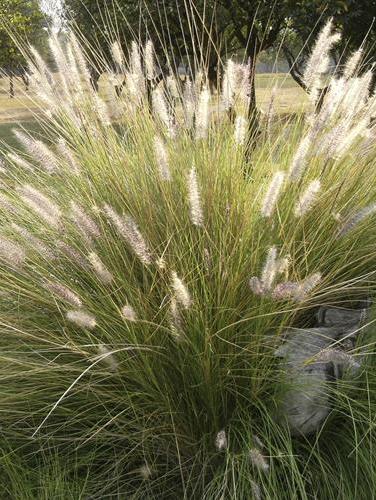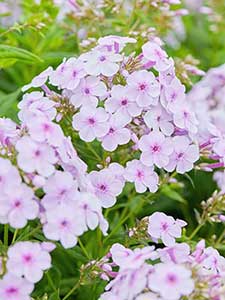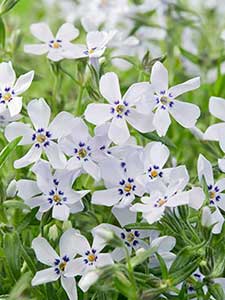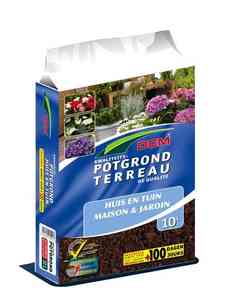Perennials for shade
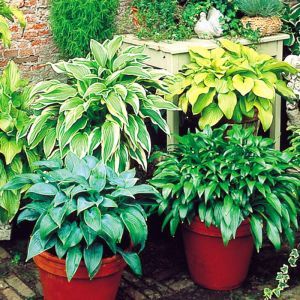 Hosta Collectie van 6 Soorten Hartlelies x 6€9.50Only 0 leftOut of stockHosta's zijn zeer ornamentale planten voor zowel de border, als vrijstaande plant op een open plaats of in potten. Grote variatie in bladkleuren.... Learn More
Hosta Collectie van 6 Soorten Hartlelies x 6€9.50Only 0 leftOut of stockHosta's zijn zeer ornamentale planten voor zowel de border, als vrijstaande plant op een open plaats of in potten. Grote variatie in bladkleuren.... Learn More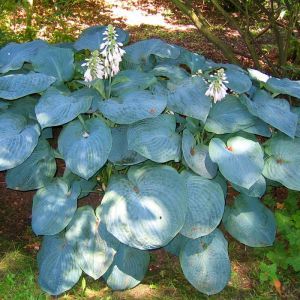 Hosta sieboldiana Elegans (Hartlelie)Hosta sieboldiana 'Elegans'Special Price €0.95 Regular Price €1.85Stock 100+De Hosta sieboldiana Elegans is een grote winterharde Hosta met diep zilverblauwgrijze bladeren en witte bloemen met een paars tintje. Learn More
Hosta sieboldiana Elegans (Hartlelie)Hosta sieboldiana 'Elegans'Special Price €0.95 Regular Price €1.85Stock 100+De Hosta sieboldiana Elegans is een grote winterharde Hosta met diep zilverblauwgrijze bladeren en witte bloemen met een paars tintje. Learn More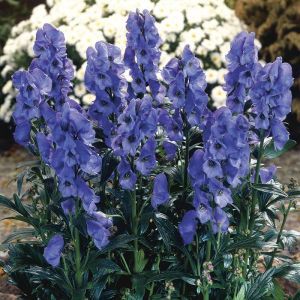 Aconitum Arendsii (Monnikskap) x 3Aconitum carmichaelii 'Arendsii'€1.95Stock 100+Aconitum, ofwel Monnikskap, heeft intens purperen kleuren en de fraaie bloemen maken van deze plant een mooie aanvulling op de late zomerborder. Learn More
Aconitum Arendsii (Monnikskap) x 3Aconitum carmichaelii 'Arendsii'€1.95Stock 100+Aconitum, ofwel Monnikskap, heeft intens purperen kleuren en de fraaie bloemen maken van deze plant een mooie aanvulling op de late zomerborder. Learn More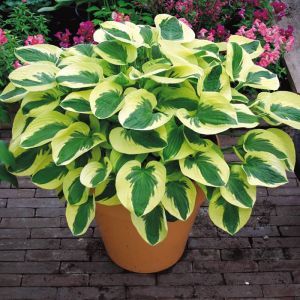 Hosta Brim Cup (Hartlelie)Hosta 'Brim Cup'€2.75Stock 100+De Hosta Brim Cup is een nog nieuwe variëteit met fraai gevormde bladeren die duidelijk geaccentueerd worden door een diepgele rand. Learn More
Hosta Brim Cup (Hartlelie)Hosta 'Brim Cup'€2.75Stock 100+De Hosta Brim Cup is een nog nieuwe variëteit met fraai gevormde bladeren die duidelijk geaccentueerd worden door een diepgele rand. Learn More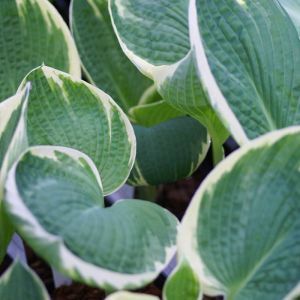 Hosta Barbara Ann (Hartlelie)Hosta 'Barbara Ann'€2.25Stock 100+De Hosta Barbara Ann is groot bladerig en de bladeren zijn bovendien zeer attractief, doordat ze hartvormig, gegolfd en blauwgroen van kleur zijn. Learn More
Hosta Barbara Ann (Hartlelie)Hosta 'Barbara Ann'€2.25Stock 100+De Hosta Barbara Ann is groot bladerig en de bladeren zijn bovendien zeer attractief, doordat ze hartvormig, gegolfd en blauwgroen van kleur zijn. Learn More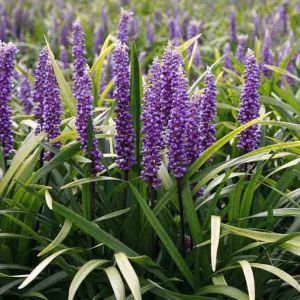 Liriope Muscari Moneymaker (Leliegras)Liriope muscari 'Moneymaker'€4.50Stock 56Liriope Muscari Moneymaker is bij ons wellicht beter bekend als Leliegras. Dit Leliegras heeft grotere bloemen dan andere variëteiten. Learn More
Liriope Muscari Moneymaker (Leliegras)Liriope muscari 'Moneymaker'€4.50Stock 56Liriope Muscari Moneymaker is bij ons wellicht beter bekend als Leliegras. Dit Leliegras heeft grotere bloemen dan andere variëteiten. Learn More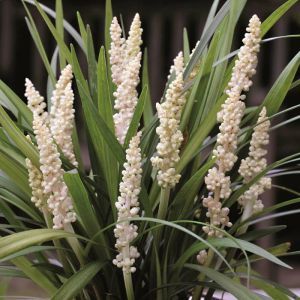 Liriope Muscari Monroe White (Leliegras)Liriope muscari 'Monroe White'€5.95Stock 34Liriope muscari Monroe White, of Leliegras, zoals hij in Nederland en België bekend staat, is zeer gewaardeerd als bodembedekker. Learn More
Liriope Muscari Monroe White (Leliegras)Liriope muscari 'Monroe White'€5.95Stock 34Liriope muscari Monroe White, of Leliegras, zoals hij in Nederland en België bekend staat, is zeer gewaardeerd als bodembedekker. Learn More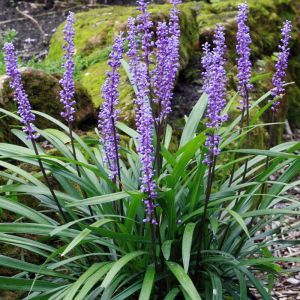 Liriope Muscari Royal Purple (Leliegras)Liriopwe muscari 'Royal Purple'€4.50Stock 68De Liriope Muscari Royal Purple (Leliegras) is perfect voor die gebieden in de tuin waar andere planten maar niet aanslaan. Bovendien verstikt hij het... Learn More
Liriope Muscari Royal Purple (Leliegras)Liriopwe muscari 'Royal Purple'€4.50Stock 68De Liriope Muscari Royal Purple (Leliegras) is perfect voor die gebieden in de tuin waar andere planten maar niet aanslaan. Bovendien verstikt hij het... Learn More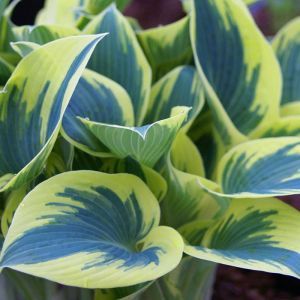 Hosta First Frost (Hartlelie)Hosta 'First Frost'€2.50Stock 100+De Hosta First Frost is een nieuw soort dat blauwgrijs blad en brede onregelmatige gele randen heeft die in de zomer wit worden. Learn More
Hosta First Frost (Hartlelie)Hosta 'First Frost'€2.50Stock 100+De Hosta First Frost is een nieuw soort dat blauwgrijs blad en brede onregelmatige gele randen heeft die in de zomer wit worden. Learn More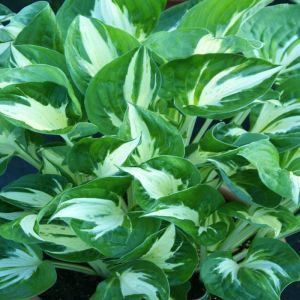 Hosta Pathfinder (Hartlelie)Hosta 'Pathfinder'€3.95Stock 100+De Hosta Pathfinder heeft welgevormde roomwitte bladeren met een ribbelig groene onregelmatige rand. Perfect voor in de schaduw of op pot. Learn More
Hosta Pathfinder (Hartlelie)Hosta 'Pathfinder'€3.95Stock 100+De Hosta Pathfinder heeft welgevormde roomwitte bladeren met een ribbelig groene onregelmatige rand. Perfect voor in de schaduw of op pot. Learn More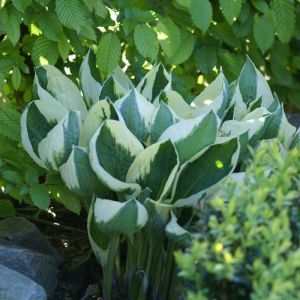 Hosta Patriot (Hartlelie)Hosta fortunei 'Patriot'€2.25Stock 100+De Hosta Patriot is een middelgrote decoratieve Hosta met een olijfgroen blad met een witte onregelmatige rand. Learn More
Hosta Patriot (Hartlelie)Hosta fortunei 'Patriot'€2.25Stock 100+De Hosta Patriot is een middelgrote decoratieve Hosta met een olijfgroen blad met een witte onregelmatige rand. Learn More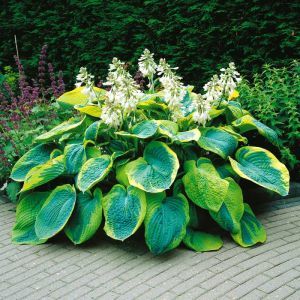 Hosta sieboldiana Frances WilliamsHosta sieboldiana 'Frances Williams'€1.75Stock 100+Hosta sieboldiana Frances Williams is een fabelachtige grote hosta met grijsgroene, wat ronde bladeren die voorzien zijn van een lichtgele rand.... Learn More
Hosta sieboldiana Frances WilliamsHosta sieboldiana 'Frances Williams'€1.75Stock 100+Hosta sieboldiana Frances Williams is een fabelachtige grote hosta met grijsgroene, wat ronde bladeren die voorzien zijn van een lichtgele rand.... Learn More Astilbe Arendsii Rood (Pluimspirea)Astilbe arendsii Fiery Red€1.75Stock 100+Astilbe Arendsii Rood (Pluimspirea) is een zodevormende Astilbe. Een prachtplant voor de schaduw tot half schaduwtuin... Learn More
Astilbe Arendsii Rood (Pluimspirea)Astilbe arendsii Fiery Red€1.75Stock 100+Astilbe Arendsii Rood (Pluimspirea) is een zodevormende Astilbe. Een prachtplant voor de schaduw tot half schaduwtuin... Learn More Hosta Sieboldiana Frances Williams 9cmHosta sieboldiana 'Frances Williams'€2.25Only 2 leftDe Hosta sieboldiana Frances Williams of Hartlelie, is een fabelachtige grote hosta met grijsgroene bladeren die voorzien zijn van een lichtgele rand. Learn More
Hosta Sieboldiana Frances Williams 9cmHosta sieboldiana 'Frances Williams'€2.25Only 2 leftDe Hosta sieboldiana Frances Williams of Hartlelie, is een fabelachtige grote hosta met grijsgroene bladeren die voorzien zijn van een lichtgele rand. Learn More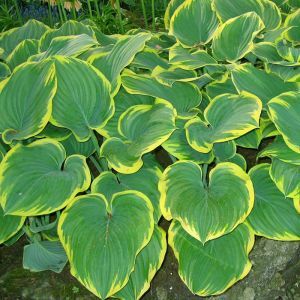 Hosta Wide Brim HartlelieHosta Wide Brim€3.25Stock 21De Hosta Wide Brim, in Nederland ook wel Hartlelie genoemd, is een winterharde plant met een hartvormig groen blad. Learn More
Hosta Wide Brim HartlelieHosta Wide Brim€3.25Stock 21De Hosta Wide Brim, in Nederland ook wel Hartlelie genoemd, is een winterharde plant met een hartvormig groen blad. Learn More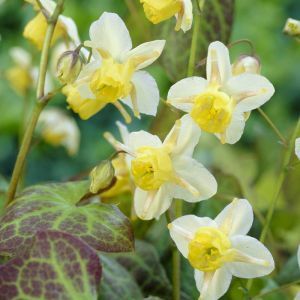 Epimedium Versicolor SulphureumEpimedium x versicolor SulphureumSpecial Price €3.25 Regular Price €3.50Stock 17De Epimedium versicolor Sulphureum, of Elfenbloem, blijft groen in de winter. Learn More
Epimedium Versicolor SulphureumEpimedium x versicolor SulphureumSpecial Price €3.25 Regular Price €3.50Stock 17De Epimedium versicolor Sulphureum, of Elfenbloem, blijft groen in de winter. Learn More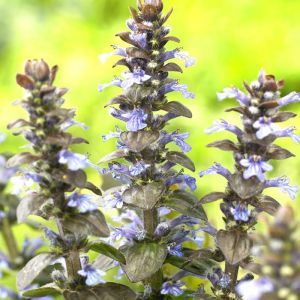 Ajuga reptans Atropurpurea 9 cmAjuga reptans AtropurpureaSpecial Price €1.50 Regular Price €2.95Stock 28De Ajuga reptans Atropurpurea wordt in Nederland ook wel Kruipend Zenegroen genoemd. Learn More
Ajuga reptans Atropurpurea 9 cmAjuga reptans AtropurpureaSpecial Price €1.50 Regular Price €2.95Stock 28De Ajuga reptans Atropurpurea wordt in Nederland ook wel Kruipend Zenegroen genoemd. Learn More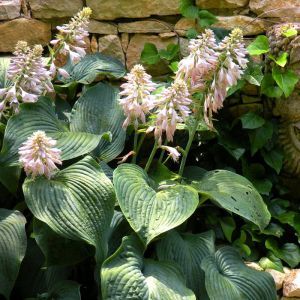 Hosta SieboldianaHosta sieboldiana€2.25Stock 45De Hosta sieboldiana wordt in Nederland ook wel Hartlelie of Funkia genoemd. Learn More
Hosta SieboldianaHosta sieboldiana€2.25Stock 45De Hosta sieboldiana wordt in Nederland ook wel Hartlelie of Funkia genoemd. Learn More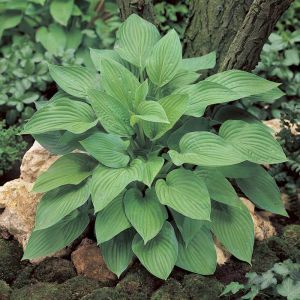 Hosta HyacinthinaHosta Hyacinthina€3.25Stock 13De Hosta Hyacinthina of Hartlelie heeft ee prachtig verkleurend blad.... Learn More
Hosta HyacinthinaHosta Hyacinthina€3.25Stock 13De Hosta Hyacinthina of Hartlelie heeft ee prachtig verkleurend blad.... Learn More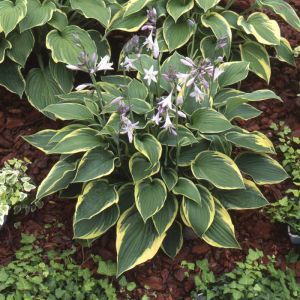 Hosta fortunei 'Aureomarginata'Hosta fortunei 'Aureomarginata'€2.50Stock 18De Hosta fortunei 'Aureomarginata' of Hartlelie heeft een groen blad met gele rand.... Learn More
Hosta fortunei 'Aureomarginata'Hosta fortunei 'Aureomarginata'€2.50Stock 18De Hosta fortunei 'Aureomarginata' of Hartlelie heeft een groen blad met gele rand.... Learn More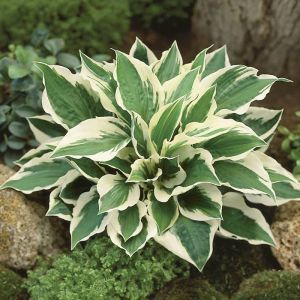 Hosta Fortunei PatriotHosta fortunei Patriot€3.95Only 10 leftDe Hosta fortunei Patriot of Hartlelie heeft een groen blad met witte rand. Learn More
Hosta Fortunei PatriotHosta fortunei Patriot€3.95Only 10 leftDe Hosta fortunei Patriot of Hartlelie heeft een groen blad met witte rand. Learn More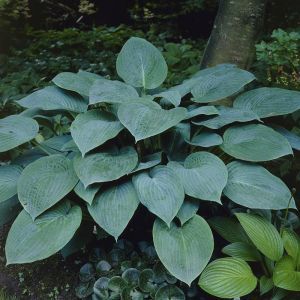 Hosta Krossa RegalHosta Krossa Regal€3.75Stock 19De Hosta Krossa Regal of Hartlelie heeft een prachtig grijs/groen blad. Learn More
Hosta Krossa RegalHosta Krossa Regal€3.75Stock 19De Hosta Krossa Regal of Hartlelie heeft een prachtig grijs/groen blad. Learn More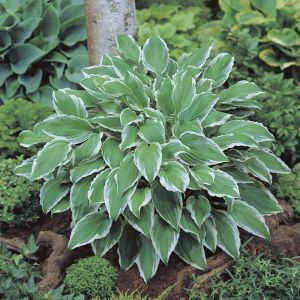 Hosta AlbomarginataHosta Albomarginata€3.25Only 5 leftDe Hosta Albomarginata is een groene Hartlelie met een lancetvormig blad met witte rand.... Learn More
Hosta AlbomarginataHosta Albomarginata€3.25Only 5 leftDe Hosta Albomarginata is een groene Hartlelie met een lancetvormig blad met witte rand.... Learn More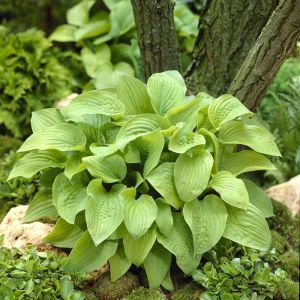 Hosta August MoonHosta August Moon€3.50Stock 24De Hosta August Moon is een Hartlelie met een lichtgroen blad dat later naar geel verkleurd. Learn More
Hosta August MoonHosta August Moon€3.50Stock 24De Hosta August Moon is een Hartlelie met een lichtgroen blad dat later naar geel verkleurd. Learn More Hosta Blue Mouse EarsHosta Blue Mouse Ears€4.50Stock 18De Hosta Blue Mouse Ears is een Hartlelie die zijn naam dankt aan zijn kleine, ronde blauw/groene blad.... Learn More
Hosta Blue Mouse EarsHosta Blue Mouse Ears€4.50Stock 18De Hosta Blue Mouse Ears is een Hartlelie die zijn naam dankt aan zijn kleine, ronde blauw/groene blad.... Learn More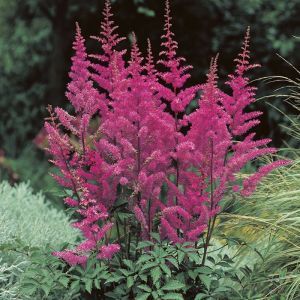 Astilbe arendsi AmethystAstilbe arendsi Amethyst€3.25Stock 16Astilbe Amethys is een hele mooie varieteit, bloeit met grote bloemen op stevige stengels Learn More
Astilbe arendsi AmethystAstilbe arendsi Amethyst€3.25Stock 16Astilbe Amethys is een hele mooie varieteit, bloeit met grote bloemen op stevige stengels Learn More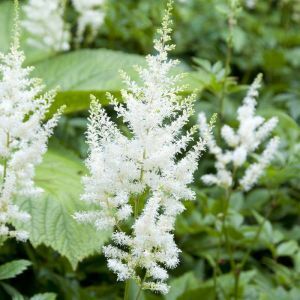 Astilbe arendsii DiamantAstilbe arendsii Diamant€2.95 As low as €2.75Stock 91Astilbe Diamant bloeit met prachtige dikke bloemaren op stevige stengels. Goed geschikt om langs een vijverrand aangeplant te worden. Ze houden van... Learn More
Astilbe arendsii DiamantAstilbe arendsii Diamant€2.95 As low as €2.75Stock 91Astilbe Diamant bloeit met prachtige dikke bloemaren op stevige stengels. Goed geschikt om langs een vijverrand aangeplant te worden. Ze houden van... Learn More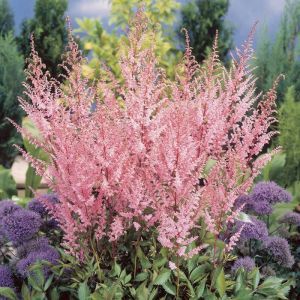 Astilbe arendsii ErikaAstilbe arendsii Erika€2.95Stock 100+Astilbe Erika is een hele mooie varieteit, bloeit met grote bloemen op stevige stengels. Doet het goed langs de rand van een vijver en op vochtige... Learn More
Astilbe arendsii ErikaAstilbe arendsii Erika€2.95Stock 100+Astilbe Erika is een hele mooie varieteit, bloeit met grote bloemen op stevige stengels. Doet het goed langs de rand van een vijver en op vochtige... Learn More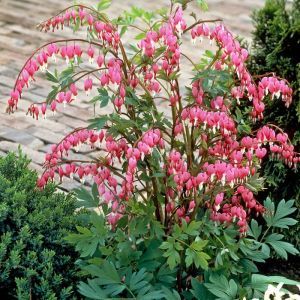 Dicentra spectabilis Bloedend HartjeDicentra spectabilis RedSpecial Price €9.50 Regular Price €9.95Stock 40Prachtige oude boerderijen plant met heel fraai gevormde bloemen die in de vorm van een hartje bloeien waaruit als het ware een traan drupt,... Learn More
Dicentra spectabilis Bloedend HartjeDicentra spectabilis RedSpecial Price €9.50 Regular Price €9.95Stock 40Prachtige oude boerderijen plant met heel fraai gevormde bloemen die in de vorm van een hartje bloeien waaruit als het ware een traan drupt,... Learn More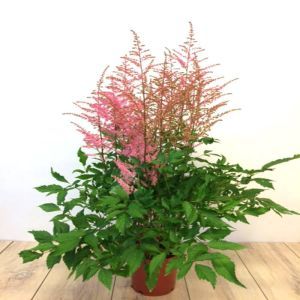 Astilbe arendsii Pink 15 cm potAstilbe arendsii Pink€6.75Stock 64Astilbe arendsii, ook wel pluimspirea genoemd, is een prachtige helder roze gekleurde plant met pluimen opgebouwd uit kleine bloemetjes. De plant... Learn More
Astilbe arendsii Pink 15 cm potAstilbe arendsii Pink€6.75Stock 64Astilbe arendsii, ook wel pluimspirea genoemd, is een prachtige helder roze gekleurde plant met pluimen opgebouwd uit kleine bloemetjes. De plant... Learn More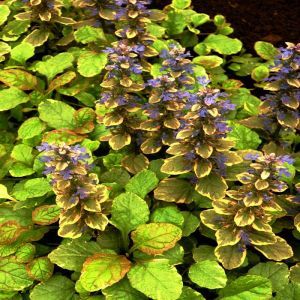 Ajuga reptans Burgundy Glow 9 cmAjuga reptans Burgundy Glow 9 cm€2.95Stock 19Ajuga reptans Burgundy Glow wordt in Nederland ook wel Kruipend Zennegroen genoemd. Het is een mooie plant met bruinrood blad met groene nerven.... Learn More
Ajuga reptans Burgundy Glow 9 cmAjuga reptans Burgundy Glow 9 cm€2.95Stock 19Ajuga reptans Burgundy Glow wordt in Nederland ook wel Kruipend Zennegroen genoemd. Het is een mooie plant met bruinrood blad met groene nerven.... Learn More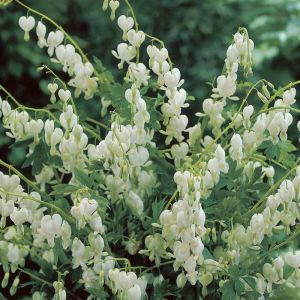 Dicentra spectabilis White P13Dicentra spectabilis White€6.95Stock 34De Dicentra spectabilis, ook wel Gebroken Hartje of Bloedend Hartje, is een fraaie, laat in het voorjaar bloeiende, vaste plant met unieke... Learn More
Dicentra spectabilis White P13Dicentra spectabilis White€6.95Stock 34De Dicentra spectabilis, ook wel Gebroken Hartje of Bloedend Hartje, is een fraaie, laat in het voorjaar bloeiende, vaste plant met unieke... Learn More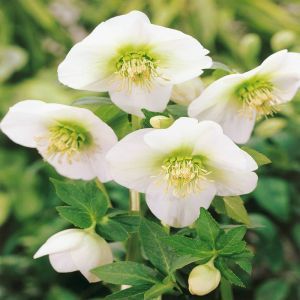 Helleborus niger White 17 cm PotHelleborus niger€9.50Only 4 leftFleur de futloze hoeken van uw tuin wat op met deze schitterend wit bloeiende Helleborus niger. Hij produceert schotelvormige bloemen in de late... Learn More
Helleborus niger White 17 cm PotHelleborus niger€9.50Only 4 leftFleur de futloze hoeken van uw tuin wat op met deze schitterend wit bloeiende Helleborus niger. Hij produceert schotelvormige bloemen in de late... Learn More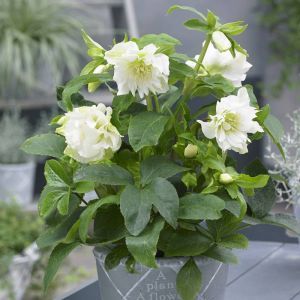 Helleborus or. dubbel Ellen White 9cmHelleborus or. dubbel Ellen White€5.50Stock 32Helleborus orientalis 'Double Ellen' is een selectie met prachtige dubbele bloemen op lange stelen. ... Learn More
Helleborus or. dubbel Ellen White 9cmHelleborus or. dubbel Ellen White€5.50Stock 32Helleborus orientalis 'Double Ellen' is een selectie met prachtige dubbele bloemen op lange stelen. ... Learn More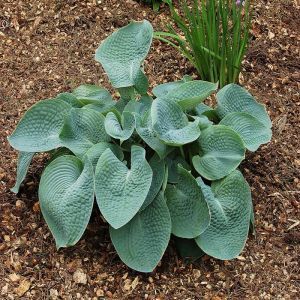 Hosta Abiqua Drinking GourdHosta Abiqua Drinking Gourd€1.75Stock 44De Hosta Abiqua Drinking Gourd heeft een rond blauwgrijs gebobbeld blad. Deze plant heeft van juli tot augustus mooie witte bloemen en groeien het... Learn More
Hosta Abiqua Drinking GourdHosta Abiqua Drinking Gourd€1.75Stock 44De Hosta Abiqua Drinking Gourd heeft een rond blauwgrijs gebobbeld blad. Deze plant heeft van juli tot augustus mooie witte bloemen en groeien het... Learn More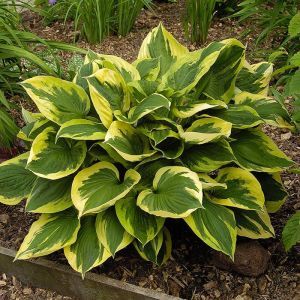 Hosta AnneHosta Anne€2.95Stock 100+De Hosta Anne heeft een donkergroen blad met een opvallende brede gele rand. Deze plant ... Learn More
Hosta AnneHosta Anne€2.95Stock 100+De Hosta Anne heeft een donkergroen blad met een opvallende brede gele rand. Deze plant ... Learn More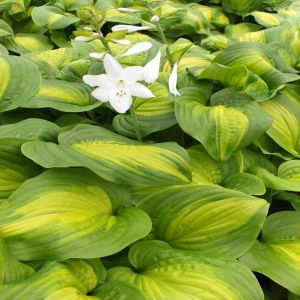 Hosta AvocadoHosta Avocado€2.25Only 4 leftDe Hosta Avocado heeft een ovaal- tot hartvorming blad met een lichtgroen centrum en donkergroene randen. De bladeren zijn licht glazend. Het beste... Learn More
Hosta AvocadoHosta Avocado€2.25Only 4 leftDe Hosta Avocado heeft een ovaal- tot hartvorming blad met een lichtgroen centrum en donkergroene randen. De bladeren zijn licht glazend. Het beste... Learn More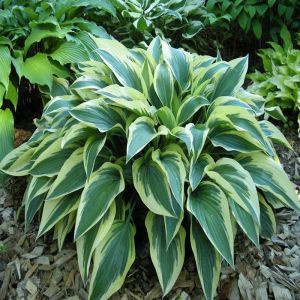 Hosta BobcatHosta Bobcat€3.95Stock 48De Hosta Bobcat heeft een langwerpig stevig groen blad met een brede gele tot witte rand. Deze plant geeft een unieke uitstraling in uw tuin.... Learn More
Hosta BobcatHosta Bobcat€3.95Stock 48De Hosta Bobcat heeft een langwerpig stevig groen blad met een brede gele tot witte rand. Deze plant geeft een unieke uitstraling in uw tuin.... Learn More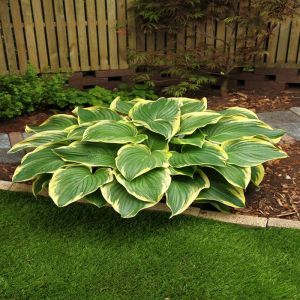 Hosta BroadwayHosta Broadway€3.95Stock 43De Hosta Broadway heeft een vlammend blad, de gele rand met in het midden een mooie groene kleur. Deze plant geeft een unieke uitstraling aan uw... Learn More
Hosta BroadwayHosta Broadway€3.95Stock 43De Hosta Broadway heeft een vlammend blad, de gele rand met in het midden een mooie groene kleur. Deze plant geeft een unieke uitstraling aan uw... Learn More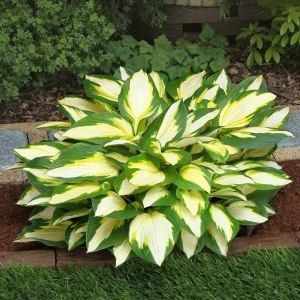 Hosta Color FestivalHosta Color Festival€4.50Stock 68De Hosta Color Festival is een plant met een driekleurig blad. Roomwit in het midden overlopend naar geel met donkergroene randen. Deze plant geeft... Learn More
Hosta Color FestivalHosta Color Festival€4.50Stock 68De Hosta Color Festival is een plant met een driekleurig blad. Roomwit in het midden overlopend naar geel met donkergroene randen. Deze plant geeft... Learn More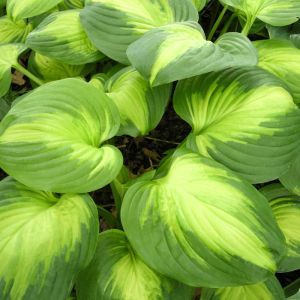 Hosta EnchiladasHosta Enchiladas€4.50Stock 31De Hosta Enchiladas heeft een helder geel blad met een brede donkergroene rand. Een opvallende plant en een goede aanwinst voor uw tuin.... Learn More
Hosta EnchiladasHosta Enchiladas€4.50Stock 31De Hosta Enchiladas heeft een helder geel blad met een brede donkergroene rand. Een opvallende plant en een goede aanwinst voor uw tuin.... Learn More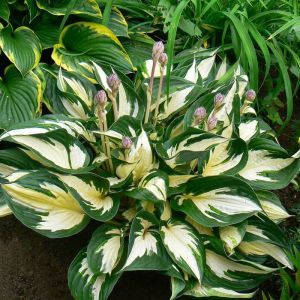 Hosta Fire and IceHosta Fire and Ice€3.95Stock 94De Hosta Fire and Ice heeft mooie koele kleuren. De onregelmatige witte bladeren met groene randen geven een mooi kleuren contrast aan uw tuin.... Learn More
Hosta Fire and IceHosta Fire and Ice€3.95Stock 94De Hosta Fire and Ice heeft mooie koele kleuren. De onregelmatige witte bladeren met groene randen geven een mooi kleuren contrast aan uw tuin.... Learn More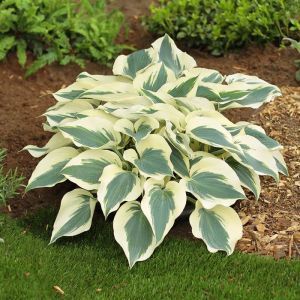 Hosta Firn LineHosta Firn Line€3.95Stock 66De Hosta Firn Line heeft een uniek matte kleuren combinatie. De bladeren zijn geel met ... Learn More
Hosta Firn LineHosta Firn Line€3.95Stock 66De Hosta Firn Line heeft een uniek matte kleuren combinatie. De bladeren zijn geel met ... Learn More- Hosta Get NekkidHosta Get Nekkid€3.25Stock 27De Hosta Get Nekkid heeft een zeer glanzend donkergroen blad. Deze plant heeft mooie middelgrote lavendelbloemen die erg aantrekkelijk zijn. Deze... Learn More
- Hosta Jurassic ParkHosta Jurassic Park€3.95Stock 42De Hosta Jurassic Park heeft mooie grote blauwgroene bladeren. Deze plant geeft een klassieke uitstraling en is een aanwinst voor uw tuin.... Learn More
- Hosta Lakeside Little TuftHosta Lakeside Little Tuft€2.25Stock 41De Hosta Lakeside Little Tuft heeft een crème tot geel kleurig blad met een donkere groene rand. Deze plant geeft een mooie kleuren combinatie... Learn More
- Hosta LibertyHosta Liberty€4.50Only 10 leftDe Hosta Liberty heeft een stevig groen blad met een brede gele rand. Deze plant geeft een spectaculaire uitstraling aan uw tuin.... Learn More
- Hosta Magic IslandHosta Magic Island€3.95Stock 16De Hosta Magic Island heeft een crèmekleurig blad met een brede blauwgrijze rand. De crèmekleur veranderd naar groen naarmate het seizoen... Learn More
Shade-loving plants are very important to many gardens as they can bring light to darker areas of the garden.
Take for example a variegated Hosta, the radiant foliage will enhance the darker area of the garden and brighten it up.
We all have a bit of shade in the garden, but this shouldn't be seen as a problem as there are so many shade tolerant plants available to brighten even the darkest of areas.
We've put together a list of some of the most popular shade loving plants to help you on your way to a colourful garden. It's good to note how long the area is in the shade for when you are selecting your plants some plants grow in partial shade with just a few hours of sun each day whereas others will grow in almost total shade.
Beautiful shady garden
How to make a beautiful shady garden? With perennials, of course! Many people think that perennials do not grow in the shade. Fortunately, there are many examples of beautiful shady gardens to prove the opposite. The range of perennials in the shade is surprisingly huge.
A shady garden is not necessarily boring, in the cool shade grow the most beautiful plants for shade. They may be less spectacular, but no less beautiful. We speak of shade, when in summer there is less than three hours a day of direct sunlight, or over a long period of time, filtered light shines on the plant. Achieving a successful plantation in a shady garden is not difficult. It is important to consider the amount of shade. In the low light environment of deciduous trees and shrubs or in front of a wall, there is surprisingly a large range of shade plants that can grow.
Taking care of shadow plants
Shade is not usually the biggest problem for shade plants, it is mostly dry soil under trees or walls to the north. If the light is low and there is almost no water, then most shade plants die. Give them more water during dry periods. You also help them by covering them with dead leaves, so the water is better preserved in the soil. Spread each year a layer of compost, wood chips or bark between the shade plants. This produces a little more humus in the soil. Humus acts like a sponge and retains water better.

